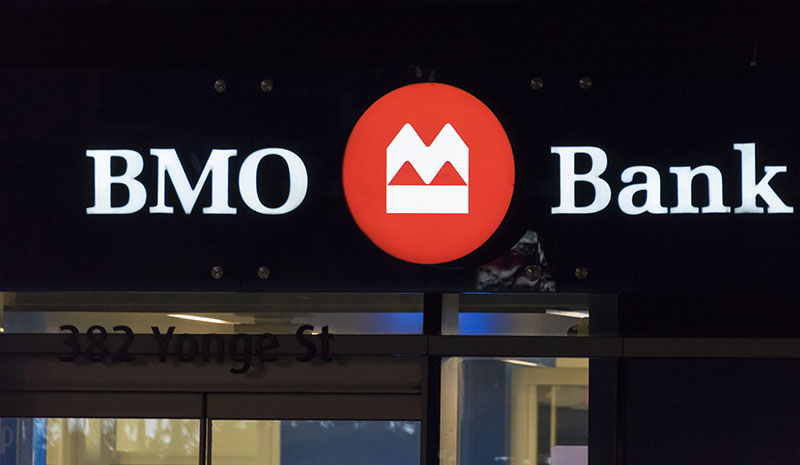* Profit miss snaps seven straight quarters of beat
* Loan loss provisions rose for most Canadian banks in Q2
* Bank of Montreal's loan growth strongest among peer banks
* Expects lower expenses in H2
By Aparajita Saxena
May 29 (Reuters) - Bank of Montreal's BMO.TO quarterly profit missed estimates due to higher provisions and a surge in expenses, but Canada's fourth-largest lender forecast lower costs for the second half of this year.
The bank said it expects its costs to rise in the range of 3% to 4% in the second half of this year, nearly half when compared to the first half.
The bank, on a post-earnings conference call with analysts, also forecast a 7% increase in earnings per share in the second half of 2019, which is in line with the first half. Despite a rise in provisions, BMO's risk appetite for lending had not changed, it said.
Non-interest expenses rose 2% in the second quarter ended April 30, mainly due to severance costs in its capital markets business and technology-related expenses.
Provisions for credit losses rose by C$16 million, but were better than estimates of most brokerages.
"There may be some debate around the benefit of lower-than-anticipated provisions (including the uptick in formations), but overall, we believe that investors will be pleased with the results, particularly in the context of what peers have generated to date this quarter," John Aiken, an analyst with Barclays (LON:BARC), said.
Shares of the bank were down 1.7% in early trading.
Loan loss provisions rose for most Canadian banks in the quarter, partly due to defaults by oil and gas companies that were under pressure in the wake of a decline in crude oil prices.
Bank of Nova Scotia BNS.TO registered a 35% surge in provisions, while Royal Bank of Canada ( RBC ) RY.TO and Toronto-Dominion Bank (TD) TD.TO posted a 55% and 14% rise, respectively.
Analysts have said the higher provisions may point to a troubling trend, which could be the beginning of an overall weakening.
STRONG LOAN GROWTH
Loan growth was strong for almost all Canadian lenders in the second quarter.
BMO reported a 13% rise in total loans, the most impressive performance among big Canadian banks.
Loans at RBC jumped 9% in the quarter, while TD posted a 3% rise. Canadian Imperial Bank of Commerce ( CIBC ) CM.TO reported negligible loan growth, while Scotiabank registered an 11.5% surge in loans.
Loan growth has also powered a jump in interest incomes of Canadian banks, although some have warned loans, especially mortgages, could decline.
BMO's home lending rose 2.6%, despite stringent rules introduced by Canada's financial regulators last year. PERSONAL AND COMMERCIAL BANKING DISAPPOINTS
Net income from BMO's personal and commercial (P&C) banking unit rose 9% in the quarter, with both domestic and U.S. units showing growth.
However, growth in its Canada P&C was not as strong as analysts had expected, despite a 4.4% rise in earnings. Net interest margin in the unit was flat, compared with the first quarter, while expenses and provisions jumped from a year earlier.
"The biggest concern we have at first look is the weakness in Canadian P&C banking," Credit Suisse (SIX:CSGN) analyst Mike Rizvanovic said.
"Although Canadian P&C results missed consensus, performance here was near the top of the peer group from an earnings growth perspective despite flat operating leverage," Cormark Securities analyst Meny Grauman said.
BMO has been putting its weight behind its U.S. business in a bid to diversify revenue streams and strong growth in the business is expected to improve its outlook.
The bank's adjusted net income rose to C$1.52 billion, or C$2.30 per share, missing analysts' estimates of C$2.33 per share, according to Refinitiv IBES data. (https://reut.rs/2KbHsvx)
